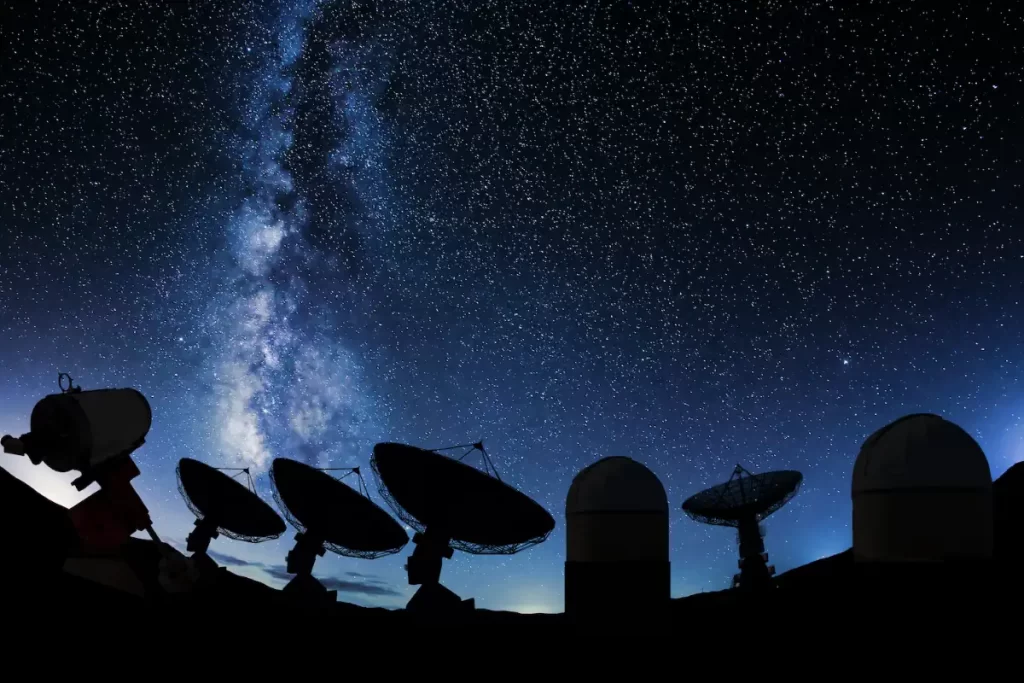In the colossal theater of the cosmos, the idea of Earth’s uniqueness presents an odd phenomenon. Is our home planet a true rarity among the galaxy’s countless stars? Do Earth-like planets, those that share similar size, orbital distance, and sun-like stars as our own, abound in the universe, or do they hold special status as celestial outliers?
In the vast expanse of the cosmos, perhaps the most peculiar thing could be us, human beings, dwelling on a planet that seems remarkably singular.
As we gaze upon the boundless night sky, littered with countless stars, it’s awe-inspiring to think that amidst this celestial tapestry, we’ve yet to find a planet quite like our own. Among the numerous exoplanets discovered, there’s none that share the same intricate balance of elements, the same precise orbit around a sun-like star, and the same conditions conducive to life as we know it. It gives us pause and compels us to ponder – what makes us, and our home planet, so extraordinarily unique? Where are other (if any) Earth-like planets?
Detecting Earth-like planets: Are they really rare, or just hard to detect?

Among the multitude of confirmed exoplanets – planets outside our solar system – there is yet to be one that precisely mirrors Earth. Certainly, there are numerous planets comparable to Earth in size. Yet, finding one that orbits a sun-like star at a distance similar to ours is a different story. The single specimen identified that fits this particular criterion is the one we inhabit.
This could be attributed in part to the technical challenges of locating an Earth twin. Astronomers employ two primary methods to discover exoplanets: detecting the gravitational ‘wobbles’ of stars and observing the shadows of transiting planets.
In the radial velocity or ‘wobble’ method, the gravitational pull of a planet induces a slight oscillation in its host star. The magnitude of this movement gives us an estimate of the planet’s mass – the stronger the pull, the greater the mass of the planet.
The transit method, on the other hand, involves the detection of a minor reduction in a star’s brightness as a planet moves across its face. A larger drop in brightness corresponds to a larger planet.
In both methodologies, larger planets are naturally easier to spot. Small, Earth-sized planets tend to be more discernable when orbiting smaller, red dwarf stars. This is because they create a proportionally larger shadow, making it easier for instruments like NASA’s TESS space telescope to detect them. The dimming caused by an Earth-sized planet transiting a sun-sized star is more subtle, hence more challenging to notice.
Time is another complicating factor. A planet orbiting at the same distance as Earth from its sun would have an orbital period akin to our “year” – approximately 365 days. To confirm such an orbit, a telescope would need to monitor that star for at least a full year to observe a single transit. To conclusively identify it as a planet, two or three such transits would be needed.
Additionally, this planet must align on the same plane as Earth, making the transit observable from our vantage point.
Due to these complexities, the discovery of such planets remains beyond the current capabilities of our instruments. Although we have found an array of small, rocky planets, the vast majority orbit red dwarf stars.
Red dwarfs are significantly more common in our galaxy than larger, yellow stars like our sun. However, there are still potentially billions of sun-like stars, each with the possibility of hosting habitable, Earth-sized worlds in their orbits.
However, this still leaves us pondering whether these Earth-like planets are genuinely rare, or if our detection methods are just not sufficiently refined. The seemingly unique configuration of our solar system, with small, rocky planets in closer orbits and gas giants further out, hasn’t yet been mirrored elsewhere.
Is our solar system unique? Rarity of Jupiter-like planets
The rarity of Jupiter-like planets in distant orbits around other stars could hold significance. Theoretically, Jupiter’s potent gravitational field might have played a crucial role in Earth’s habitability by absorbing small rocky debris that could have otherwise collided with Earth, disrupting the early stages of life.
With a journey around the Sun taking a lengthy 12 years, it holds a unique position among the planets. Interestingly, planets of Jupiter’s size and orbit are uncommon around other stars, sparking curiosity among scientists.
The significance lies in Jupiter’s potential protective role. With its strong gravitational pull, this gas giant might have acted like a cosmic vacuum cleaner, drawing in and absorbing smaller rocky debris that could have posed a threat to the developing Earth. This way, Jupiter might have shielded our young planet from catastrophic impacts, allowing it to nurture the budding lifeforms without interruption.
This protective role of Jupiter, however, is not just limited to the early years of our solar system. Even today, it continues to play guardian, capturing comets and asteroids that stray too close to Earth. This interstellar relationship between Earth and Jupiter, much like a cosmic guardian and ward, is a fascinating area of research in our continued exploration of the universe and our place within it.
Current exoplanet research indicates that our solar system’s structure appears to be an anomaly. Many of the solar systems we’ve found out there seem to be quite different from our own. For example, instead of small, rocky planets like Earth close to the star and gas giants farther away, other solar systems often have enormous gas giants, “hot Jupiters”, circling extremely close to their stars. Additionally, most of the planets we’ve discovered are orbiting red dwarf stars, which are much smaller and cooler than our Sun.
But, the rarity of Jupiter-like planets in orbits similar to Jupiter’s might be due in part to these detection biases explained above. Long-period gas giants that are farther from their stars produce fewer noticeable effects and are thus harder to detect. Our methods of discovering and confirming the existence of exoplanets are still evolving and, with time and technological advancements, we may yet discover more true Jupiter analogs.
So, finding “real” Earth-like planets – that is, ones similar in size to Earth, orbiting a sun-like star at a similar distance -, is challenging. This is a slow, meticulous process.
While it might seem that our solar system is an anomaly, the reality is that we’re still gathering data. There’s a lot more to explore in the vast universe, and it’s quite possible that as our technology improves and our data pool grows, we might yet find that Earth-like planets are not as rare as they currently seem.
More comprehensive data collection is necessary to determine the prevalence of planets resembling Earth in both size and location.
Future space telescopes might have the capability to analyze the atmospheres of remote, rocky worlds, looking for signatures of oxygen, methane, or carbon dioxide – markers of an atmosphere similar to ours.
For the time being, our understanding remains nebulous. Earth-like planets around sun-like stars might be widespread. Alternatively, they could be the genuine rarities of the galaxy, making our home planet a uniquely precious entity in the cosmos. In space, there really might be no place like Earth.
Sources
- Rare Earth Hypothesis on Wikipedia
- “Rare Earth hypothesis: Why we might really be alone in the universe” on Astronomy.com
- Rare Earth Hypothesis on the Planetary Science website
- Space Shuttle Endeavour’s Touchdown Meets Columbia’s Salute [An amazing photo from the past] - February 29, 2024
- Moon Landings: All-Time List [1966-2024] - February 23, 2024
- From Orbit to Ordinary: 10 Earthly Applications of Space Technology - January 23, 2024

